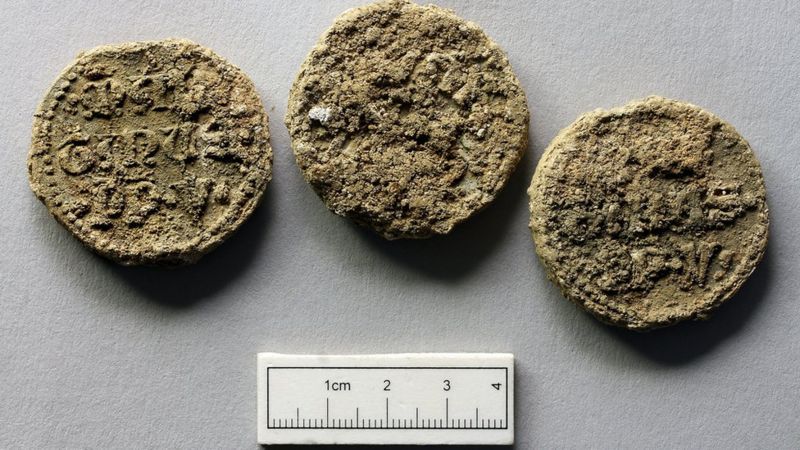Facial Reconstruction Reveals Medieval Monk’s ‘Impish’ Features
Researchers digitally revived Abbot John of Wheathampstead 555 years after his death
:focal(396x274:397x275)/https://tf-cmsv2-smithsonianmag-media.s3.amazonaws.com/filer/3b/8a/3b8adc53-6ca8-4171-84cf-49bf5fac3081/abbot_john.jpg)
In 2017, excavations at St. Albans Cathedral in southern England uncovered the long-forgotten burial site of Abbot John of Wheathampstead, a 15th-century religious leader who mingled with royals, supported humanist endeavors and befriended the pope. Now, more than five centuries after his death in 1465, a new digital reconstruction is offering the public a chance to meet this medieval monk face-to-face.
Caroline Wilkinson of FaceLab, an interdisciplinary research group based at Liverpool John Moores University, led the reconstruction. She and her colleagues have previously worked on notable facial reconstructions of Robert the Bruce, Johann Sebastian Bach, Saint Nicholas, Richard III and Cleopatra’s sister Arsinoe, reports Matthew Weaver for the Guardian.
Speaking with Laura Bloom of the “Alban, Britain’s First Saint” project in 2018, University of Exeter historian James Clark described John—who held the post of abbot between 1420 and 1440, and again between 1451 and 1465—as a “cultural patron of international reputation.” In addition to curating a vast collection of medieval manuscripts, he penned his own books and poetry and elevated the abbey’s international profile.
“Abbot John added a great deal to the renown and the beauty of the Abbey, and attracted many new pilgrims from Britain and overseas,” the cathedral’s dean, Jeffrey John, said in 2017. “ He also defended the Abbey from destruction during the Wars of the Roses and was proud to say that he had preserved its treasures for future generations.”
John was buried alongside three papal bulls issued by Pope Martin V. These official seals, acquired during a 1423 trip to Italy, afforded the abbey special privileges; their presence in the grave helped archaeologists identify the abbot’s remains, confirming his status as “the best known and most influential of all the forty heads of the great Benedictine monastery,” writes Clark in a blog post.

To reconstruct John’s likeness, FaceLab relied on his well-preserved skull, as well as earlier research conducted by Emma Pomeroy, an archaeologist at Cambridge University, according to the Herts Advertiser’s Matt Adams.
“The more information we have, the better a reconstruction is going to be,” Wilkinson tells the Guardian. “We’re going for the most likely appearance, and that means working with all the information we have so it’s as accurate an estimation as possible. It’s not an exact science.”
As Wilkinson explains, the team based the reconstruction’s anatomy and shape on the skull itself. But other details—mainly such “textural information” as skin tone, eye and hair color, wrinkles, and attire—can’t be obtained from skeletal analysis.
To inform their reconstruction, the scientists turned to Clark, who has studied the cathedral’s medieval history in depth. Per the Guardian, Clark was able to provide detailed background on John, including his well-known flushed complexion and chronic health issues.
“The reconstruction of Abbot John of Wheathampstead’s face brings him startlingly to life, and immediately invites us to read his character from his features,” says Jeffrey John in a statement. “He has an impish look, but also looks like a man who was not to be trifled with—as befits one of the most powerful ecclesiastical fixers of his day.”
According to BBC News, John is the first major 15th-century figure to undergo digital facial reconstruction since 2013, when experts revealed the visage of Richard III. Clark adds that the likeness is the “first accurate representation of a monastic figure in England before 1500.”
Visitors hoping to meet John themselves can stop by the cathedral’s new exhibition on him and follow a trail designed to allows guests to walk in the abbot’s footsteps.